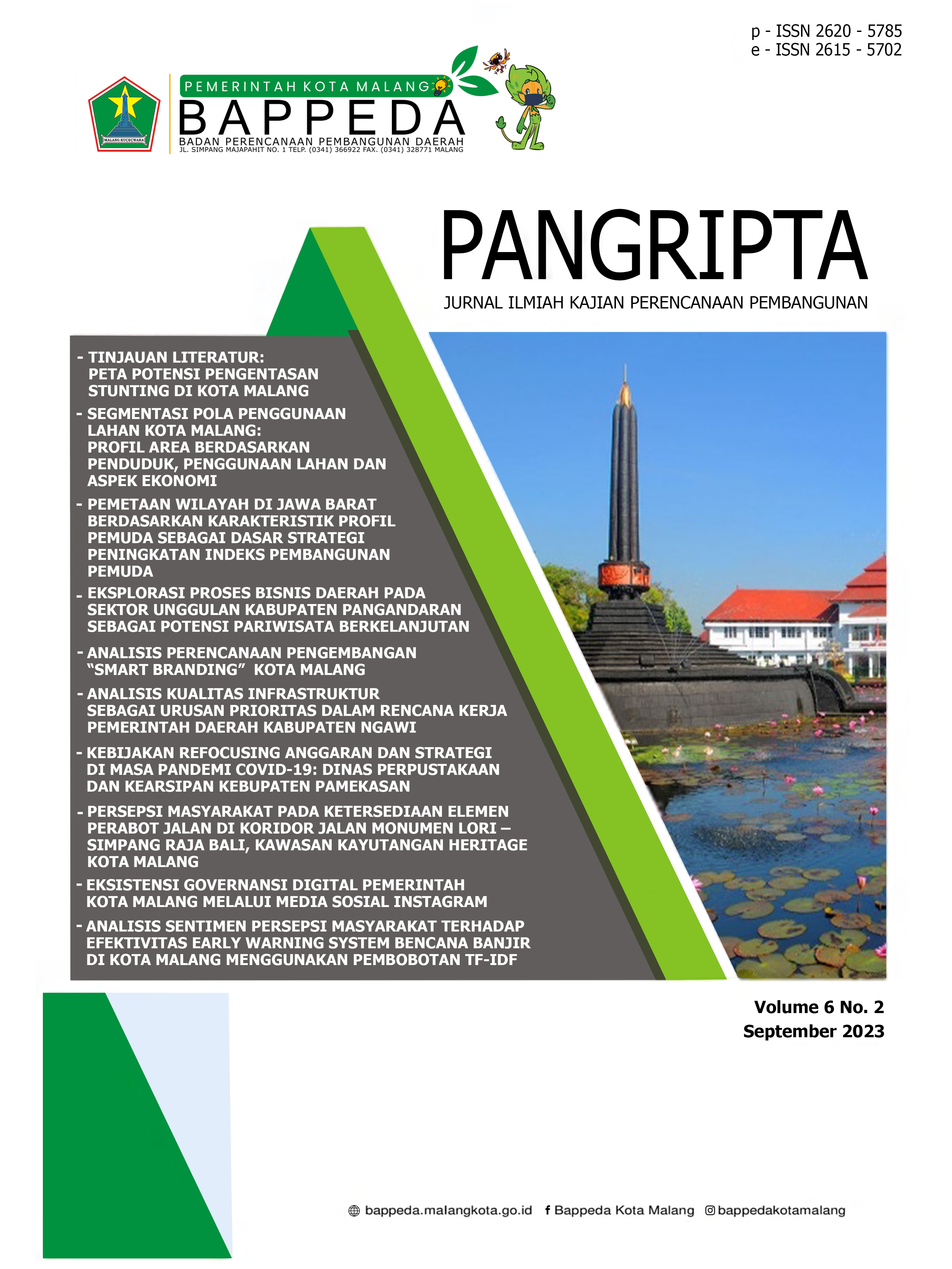SEGMENTASI POLA PENGGUNAAN LAHAN KOTA MALANG: PROFIL AREA BERDASARKAN PENDUDUK, PENGGUNAAN LAHAN DAN ASPEK EKONOMI
DOI:
https://doi.org/10.58411/pangripta.v6i2.205Keywords:
Land use patterns, cluster analysis, clustering, Malang CityAbstract
This study aims to identify patterns of land use in Malang City and analyze the factors that influence it using the cluster analysis method. The variables used in this study are land area, population, population density, hotels, markets, business units, education, and health. The data was obtained from the publication of the Central Statistics Agency entitled "Malang City in Figures 2023". The hierarchical cluster analysis method with Euclidean distance and the ward method is used to classify districts in Malang City into clusters. The results of the analysis using the silhouette index show that there are 2 clusters with different characteristics. Cluster 1 has superior characteristics related to population density, number of hotels, markets, business units and health facilities. Meanwhile, Cluster 2 excels in land area, population, and educational facilities. Descriptive analysis of each cluster helps in understanding the area profile in each cluster. The policy recommendations resulting from this research can serve as a guide for the Malang City government in developing sustainable spatial planning policies. Implementation of these recommendations is expected to improve the quality of life of residents and encourage the development of a better city.

Downloads
Published
How to Cite
Issue
Section
License
Copyright (c) 2023 Akhmad Amirudin, Eva Fadilah Ramadhani, Durratun Nashihah

This work is licensed under a Creative Commons Attribution 4.0 International License.

